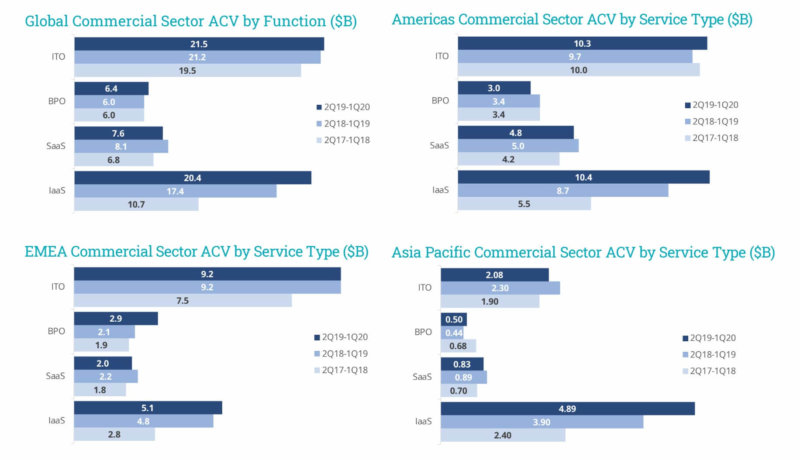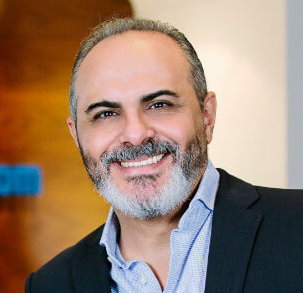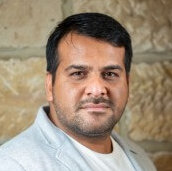28 January 2021
2021 study: How effective is outsourcing developers from Europe?

The development plan is still scattered across emails, notes, minds. You’re sure your software project will drag on without a top gun development team, and the management is eagerly awaiting results. Someone from your network recommended Europe as a hotspot for ITO works, but is it, really? Explore the must-know facts asnd metrics that will help you estimate the success of outsourced development done on the Old Continent as compared with the Americas, MENA, the Far East, and the Asia-Pacific.
You know this must be a sound decision. Expanding in-house talent is a daring responsibility, as a software development project of 3 to +9 months calls for a lot of commitment.
Failure is not an option — maybe there’s already a contract you follow — but there’s no open-book source that measures ITO (information technology outsourcing) project success by region or country.
It means you need to get creative to place your bet. Knowing that ease of communication must guide the final choice of a partner (consider our PM’s essay on remote team communication culture), it’s time for a checkup of study-based data sources in our search for credible software development companies.
Fact sources for this analysis
You might have a list of countries you’re unsure of, or maybe you’re still wondering about pushing the development to China, India or the Philippines.
Will the new team accept your project management style?
When Googling about, you’ll find a lot of “top” rankings for software development countries. The mirage dissolves when you click through and see that many authors rarely link their choice to any credible source.
To save you around 7 hours of caffeine-fueled research, your friends here prepared a mini-business study you perhaps will like to forward to stakeholders.
Here are the sources main we’ll consider while establishing the “effective” factor:
- Statista’s outsourcing revenue by region for 2010-2019
To see where most contracts go.
- ISG’s commercial sector growth by technology service for 2017-2019
Know which regions rule in specific development services.
- SourceSeek’s Global Software Services report for Q4 2017
That’s the answer to how software teams look like in key ITO regions.
- Coursera’s Global Skills Index for 2020
Ranking total skill in the most prominent technologies.
- Github’s State of the Octoverse for 2020
Find out where the most active software developers come from.
Why this set of data?
Because it’s based on the volume of total sales + registered developer proficiency, which are the two factors to consider when looking for software outsourcing services (ask your CTO).
You can feed your mind with statistics, but they’re only nutritious for logic if they’re comparable and measured in time, which is what this selection of reports delivers.
Where do businesses outsource projects to?
Statista — a website aggregator of 25,000 data points — suggests that in 9 years since 2010, EMEA (Europe, Middle East, Africa) attracted $85B (or 8.4%) more in outsourcing revenue than the Americas.
This is because, by the law of currency value, the west always outsources to the east. Look below:

There’s a lot of numbers plastered here, but no worries. What that means is:
- EMEA led in outsourcing in 2010-2019.
- This is because project costs are relatively lower than in the Americas, but development quality is comparable or better (story twist explained later).
- Asia-Pacific countries have been growing in outsourcing deals, reaching 11.4% of total reported sales for 2019.
- Find sales growth for information technology outsourcing below
What should a CTO remember when searching for a software partner on platforms such as Clutch or Toptal?
Look for facts that confirm the partner can handle complex projects. When considering case studies, notice if they describe one-off projects or a year-long partnership with continuous maintenance. You never know how your project might shift, so remember that companies with over 100 professionals might have a richer selection of focused talent specialized in the technologies you use. In case you need to switch up the stack, you won’t have to gamble on connecting two different software partners, because differences in their project philosophy might crash your operations.
Remember to look at their reviews and check for red flags. Analyze any negative reviews carefully as they tell deeper stories compared to the positive ones. You should also make sure the partner’s communication process fits you to ensure a smooth delivery.
What defines the European business environment
Europe doesn’t survive on taxing alone, mind you.
The Old Continent has been a reliable trade partner for the United States and China for decades as one of the biggest combined economies worldwide.
There’s an established network of headquarters for key enterprises here connected to both East and West. T
Through these hubs, industry trends, work processes, and custom software development norms spread into the majority of European countries, where most professionals strive to develop a skill set that reflects top market requirements:
- European nations are fast to recognize and adopt optimal business practices set by North American innovators, so you can expect partners here to respect your workflow.
- Flexible business policies for EU member countries keep the overall European market in peak competition, which means the option not to find a good business deal within the Union is miniscule.
Facts suggest that an American, Canadian, or European won’t struggle much with successful software outsourcing to Europe and its closest regions.
We can assume that by counting the number of well-funded startups centered here, such as Klarna, Deezer, or Trustpilot.
Which apps can you build with success by outsourcing?
🖼️ Browse examples in our collection described by challenge, solution, effect, and metrics.
How steady is outsourcing developers post-pandemic?
You should evaluate each potential software house individually, as predictions show all regions limited business operations in 2020.
Still, some places remain ready for work with limited spending, while others had to scale back on financing technology development, which may lead to lower partner availability.
The case for European software outsourcing remains strong despite the market disruption.
In both Europe and America, Covid might not have disrupted the field of technology, as most businesses surveyed in both regions hold their IT budgets for 2021 to prevent any roadblocks for software development operations.
That may mean their clientele has not changed dramatically, and the workload is comparable to mid-2020.
Now, compare Europe and America in 2020 with the rest of the world.
Asia-Pacific countries, Japan, the Middle East, and Africa had the greatest budget cuts, so their software development services might be offered at a limited capacity right now.
It’s not all bleak — Latin American businesses increased their IT budgets to prepare for nearshoring support for North America, and China keeps its spending high as a low-cost software development spot.
How much business goes to European outsourcing companies?
I’m forwarding your question to ISG, a Nasdaq-listed technology advisor that has been running quarterly market studies since the pre-Instagram era (guess the year).
Their data sourced from around 20 countries reveals the EMEA region seconds behind the Americas in the annual contract value of internet technology outsourcing (ITO) services.
The evaluation covers sales of hardware, digital infrastructure, and web and mobile software development work.

- In the three years before 2020, EMEA earned just $3.4B less than Americas in internet technology outsourcing services.
- EMEA is also the second-largest market of SaaS (Software-as-a-Service) and IaaS (Infrastructure-as-a-Service) services, with the Asia-Pacific being a rising IaaS competitor that can overtake business.
💡 Know more
What are the 3 rules that help connect in-house and outsourced development teams?
Treat the outsourced team as your own, without the “us vs them” mentality. Agree on the model: either trust the partner with management, or if you’re hands-on, use the same hiring and selection requirements for external developers that you use in-house.
Invest time into welcoming your partner on board. Have regular retros with the cross-functional team and iterate on the working model or staffing when issues arise. Getting your voice heard as an external increases engagement and reduces costly churn.
Also, respect the partner’s work model. If you agreed on a “standalone”, let them self-manage while you work on the same output metrics your team has. But if you’re leading the outsourced team, remember that you’re solely responsible for their productivity.
How does a business-ready software development team look like?
Studies done by SourceSeek reveal that, on average, Eastern European software companies have a development team of 48, taking the fourth spot on the list.
North America holds the podium with 80 developers, followed by the Middle East (51), and Asia (50).
While the U.S. and Canada remain the combined tech kingdom also in this category, you can expect a comparable number of developers per project when looking into Europe and Asia — the two most talked about places for outsourcing software works.
Of course, teams vary because of their technology preference.
Your JavaScript projects might have better luck in Eastern Europe or South America than other regions, and while you can find specialized PHP and MySQL developers in nearly every corner of the planet, Middle Eastern and South Asian software houses should be best equipped to handle them.
Study the chart below to see where to knock with your next big thing:

From Eastern Europe alone, you can expect software development houses proficient projects combining most in-demand JavaScript frontend frameworks (like React or Vue) with Java or PHP for the backend.
When considering your choice of an outsourcing partner, remember that many European companies have their online tech radar accessible for your review.
You can examine The Software House’s tech radar freely. Maybe it’s a match?

What are the 3 critical factors decision-makers must verify about a new software development partner?
First, start with a non-critical project. Think of HIPAA, GDPR, and other security and privacy regulations that might prevent the outsourced team from being a good fit. Only after several releases, you’ll get a good feel for the projects that match.
Second, you’d like to have a strong local lead. Keep the product management vision close to your company’s leadership so that the product keeps meeting your customer’s needs.
Third, Agile is a must. With a far-flung team, short sprints give plenty of opportunity to iterate. Set up a good CI/CD pipeline and a workflow with visibility into the team’s activities so you can safely release your first proof-of-concept app.
Regions ranked as effective in technology
Nations have their character that defines their mastery in technology works. What’s the latest intel on software developer proficiency then?
That’s what Coursera answers in their recently released 2020 Global Index report.
Sure, there are developer rankings from talent platforms, but Coursera’s study is worth considering, as they remain in partnership with over 200 universities (including Yale, Duke, and the Imperial College of London), which probably advised them on the methodology.
- The index verified skills in areas such as web development, JavaScript and C coding, or AI, Cloud, IoT, and API programming.
- There are four distinct rankings: “Cutting-Edge” marks +76% proficiency, “Competitive” goes from 51 to 75%, “Emerging” covers 50% to 25%, while “Lagging” means 25% and down.
- Mind that in this edition, Coursera also ranked the handling of business (1) and data science (2), which can also aid your strategy.
Which region leads in outsourcing software development?
Experience the unexpected. That’s no joke — even I’m surprised.
According to Coursera, Western, Central, and Eastern European developers lead the charts for “cutting-edge” technology proficiency by 98%.
The top 15 gang includes countries such as (descending) Belarus, Switzerland, Ukraine, Finland, and the Netherlands. Poland — where we’re from — is still among them. It’s like a birthday gift.
So who takes the 2% that’s left? It’s a spot for Russia which ranked no 1 in this edition — the only Eurasian country in this segment.

Europe is still dominating by 53% in the “Competitive” group (that counts Norway, Denmark, Spain or UK), with an even 13% split for Asia-Pacific (Vietnam and Japan), the Middle East (Saudi Arabia; United Arab Emirates), and Oceania (New Zealand and Australia).
Canada stands alone for North America, ranking relatively high at no 20.
Developers from emerging countries — ranked as 26-50% proficient — come from the Asia-Pacific (40%), followed by the Middle East, the isolated U.S. for North America, and South Africa as the only country from the continent.
In terms of the regions that are “lagging”, we’ll let you skim through the list for yourself.
Remember that Coursera’s scoreboard might be a somewhat accurate evaluation, but it shouldn’t be considered a definite list of outsourcing spots to avoid.
There are really good teams with a hands-on attitude all over if you look hard enough under every rock.
What does the kickoff phase need for an outsourced software development project to be successful?
As we in Australia started working with our own remote developers in Poland, we needed major changes to project kick-offs. For each one, we start with a communication plan that defines how often we’ll meet and the tools we’ll use to have an established source of truth.
We appoint a local project owner, a remote project lead, and share the rest of the roles and responsibilities across teams. Throughout meetings, the local and remote team define a comprehensive project outline, the scope, and set expectations for project deliverables and deadlines. We’ve found that getting both perspectives helps to make projects more achievable for everyone.
Finally, we try to identify and mitigate any risks. If unplanned tasks appear, we’ll go through a 4-step process; assess the requirement, set its priority, communicate details to the project owner, and attempt to squeeze it into the current sprint.
To know who codes well, see who codes the most
Have you considered GitHub’s statistics?
GitHub has a reported 88% market share as a source code management platform, which means many of the world’s software developers rely on it daily.
Their recent report is worth looking into, as it’s based on a packed volume of +60M repository contributions from 2020.
In your hunt for a software development partner, you might want to know that European coders are the third most active contributors, with North America and Asia in the lead of the tech race.
- Software developers from the top three regions value collaborative coding, feedback, and competitiveness that keeps professionals sharp.
- While the U.S. and Canada set technology standards for other regions, Asia and Europe have a very close share of development innovators.
- The contribution gap between finalists is only 8%.

💡 Know more
What rules should CTOs implement to avoid quality issues on the side of the software house?
CTOs should verify if the product owners in charge of development projects have sufficient business and technical knowledge. They need to grasp user needs and workflow processes, and they should understand how the selected technology resolves a business challenge.
If a technically superior product doesn’t meet the project objectives, it will be deemed a failure. Good UI won’t solve anything if the software doesn’t function as advertised under the hood, especially when a good number of users adopt it. A stricter selection of Product Owner talent leads to greater project success. We’ve learned to break projects down into smaller components, and we constantly monitor progress to make sure quality is never sacrificed.
Use the findings in the search for a software development company
If you made it so far, you have nerves of steel or a praise-worthy determination.
We covered a lot of ground, so you deserve a reward — here’s a brief checklist that will help you use the data you (tried to) read to outsource software development with success.
If you’re really careful about entering a new, digital project, this will let you make an educated guesstimate.
1. Know if the business is from an outsourcing growth area
Yep, you guessed it. It will probably be North America (best technology, software solutions, and prices) or Europe (somewhat good rates, same neat attitude from software developers).
2. Confirm if the region profits in the services you need
ITO (mostly web and mobile development) and SaaS services (may it be platforms or databases) have similar demand in the Americas and EMEA.
But if you’re managing an IaaS project (involving Amazon AWS or Microsoft Azure), then Asia-Pacific might offer you more proficient development teams to invest in, as the region goes head-to-head with EMEA.
3. Review Coursera’s country tech proficiency rank
See how good your potential partners are in handling technology fundamentals.
The ranking provides a joint score for skills in C, AI, JavaScript, Web Development, UX Design, Cybersecurity, and more.
4. See if an outsourcing company ranks well
Honestly, it would be wise to follow a recommendation from a tech fellow.
If you, however, find yourself short on trustworthy advice, know that Clutch runs rankings of best-reviewed software outsourcing companies per country.
Toptal and Aciety are also recognized websites you can investigate.
5. Consider the team structure
With LinkedIn — that espionage tool you have — you can investigate if a software house that’s on your mind has a well-rounded development team.
Compare it with your structure. Some of the people there might be in your future outsourced team, and they need to fill the gaps in your talent.
Are there enough Senior Engineers? How about their UX squad?
6. Check that stack on the tech radar
What developers use daily often remains a trade-secret locked in a bunker.
So if you find a partner with an open tech radar, consider that a sign of good-will (because they want to find a tech match) and transparency (as it’s still valuable know-how).
Key points:
- The “effectiveness” of outsourced software development had no substance, so we set Europe against other regions based on comparable sales and skill data from 5 sources.
- These included studies from ISG Index and Statista (economy) plus SourceSeek, Coursera, and Github (proficiency).
- Europe remains the second leading market in ITO services by volume of sales, spending, developer skill, and code contribution right after North America, with the Asia-Pacific catching up on the 3rd spot.
- Central Europe (the UK, the Netherlands, Poland, Czech Republic) competes with the Eastern part (Russia, China, Ukraine, Romania), yet the first has lower project entry barriers in terms of talent availability, work quality, and impersonal communication. It’s easier to find a custom software development company there that’ is a culture-fit
You are now better prepared to ride along with the right outsourcing partner. Best of luck in finding a development team that delivers fail-safe custom software solutions on a deadline. If you found this research helpful, share it with your CTO or Product Lead colleagues who appreciate transparent data research.
🗺️ Get the roadmap to software development outsourcing
Too many options? Explore and save Developing Software Abroad. It’s our 4-step guide to outsourcing development. Covers region selection, partner evaluation, briefing, tech compatibility, and merging teams.






